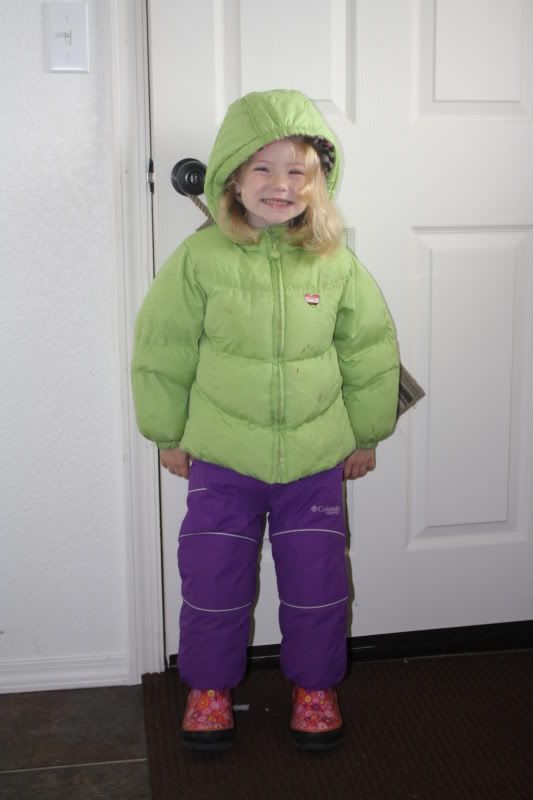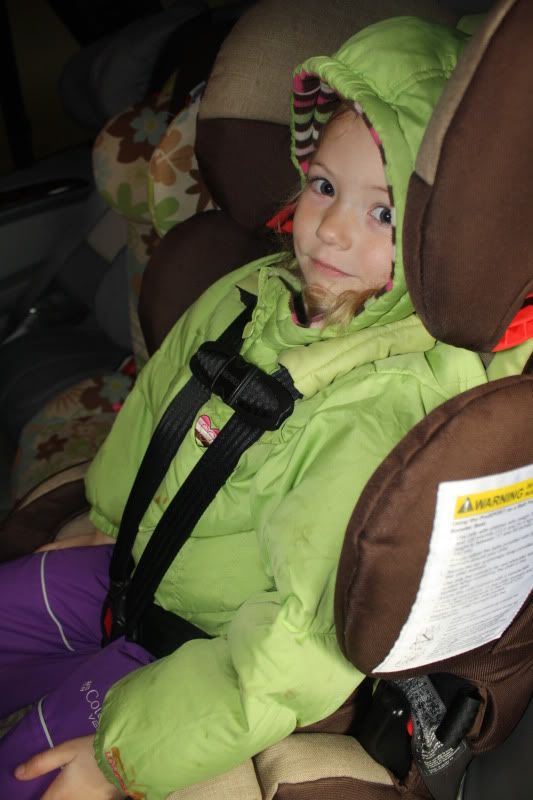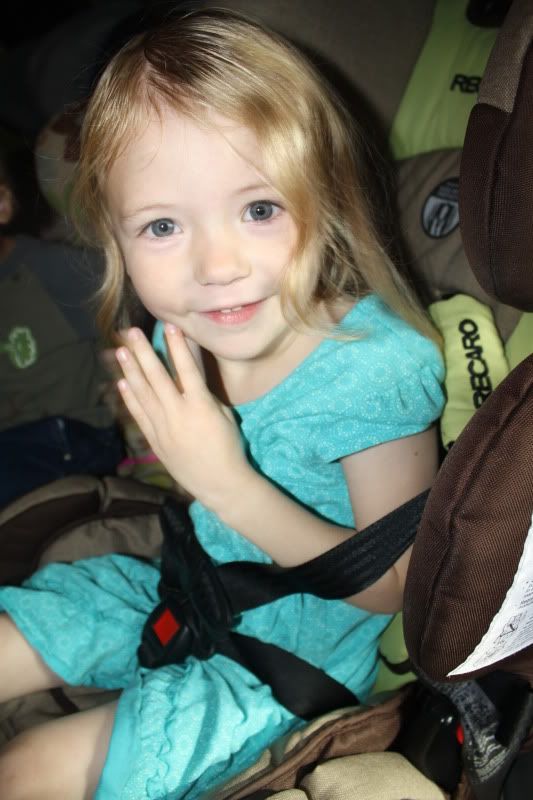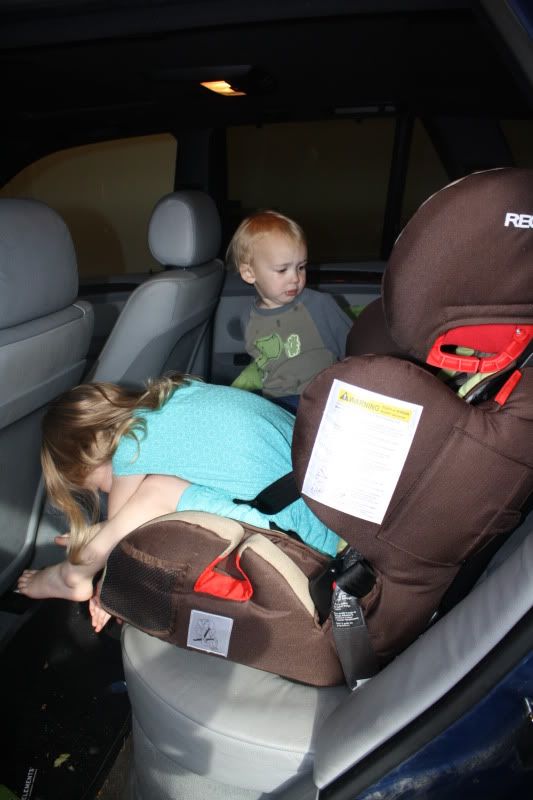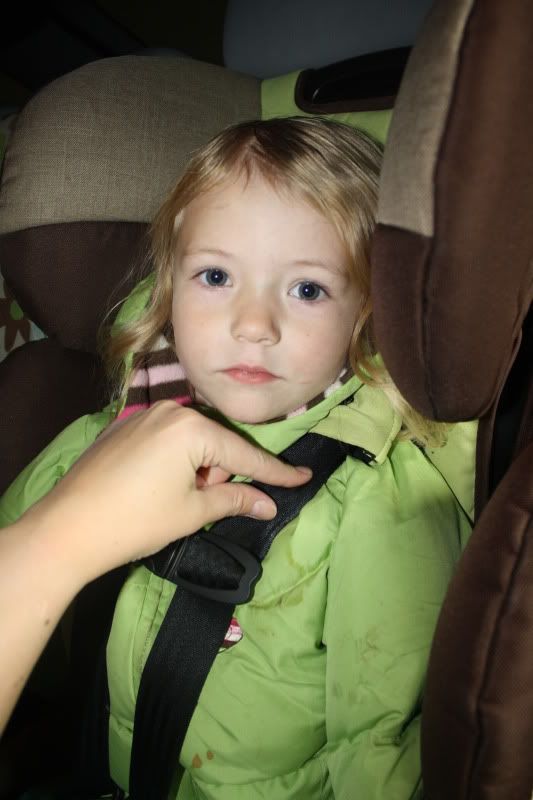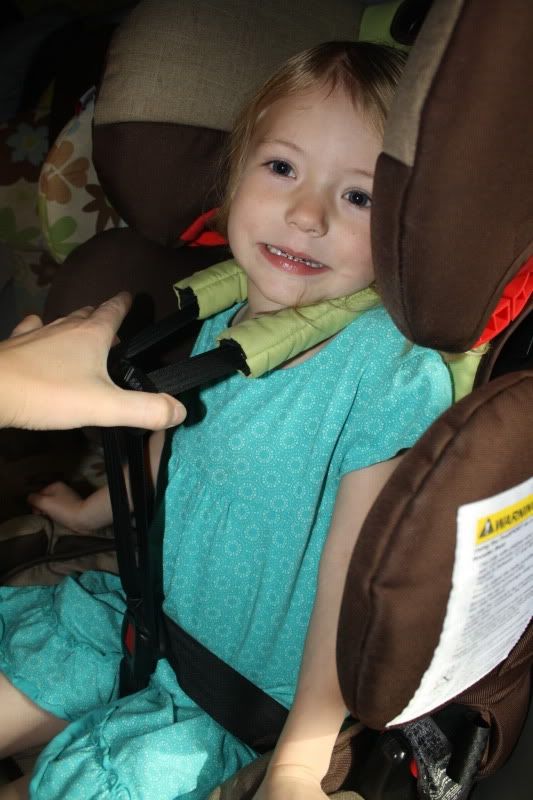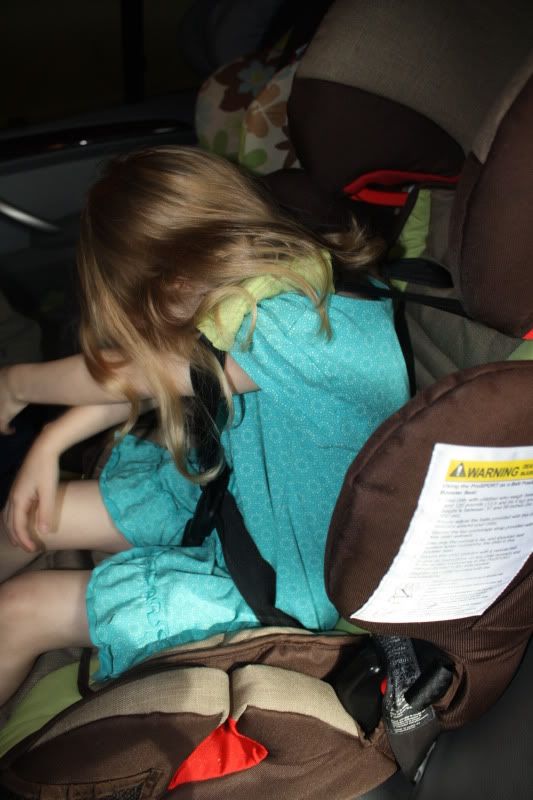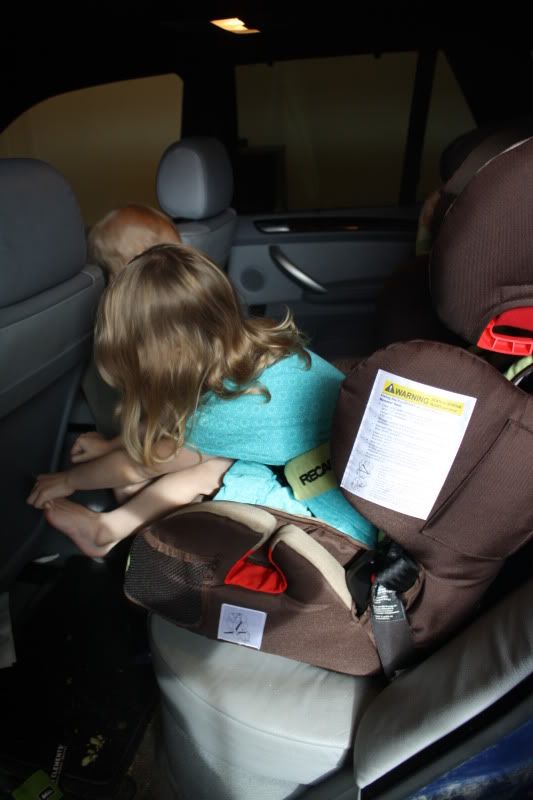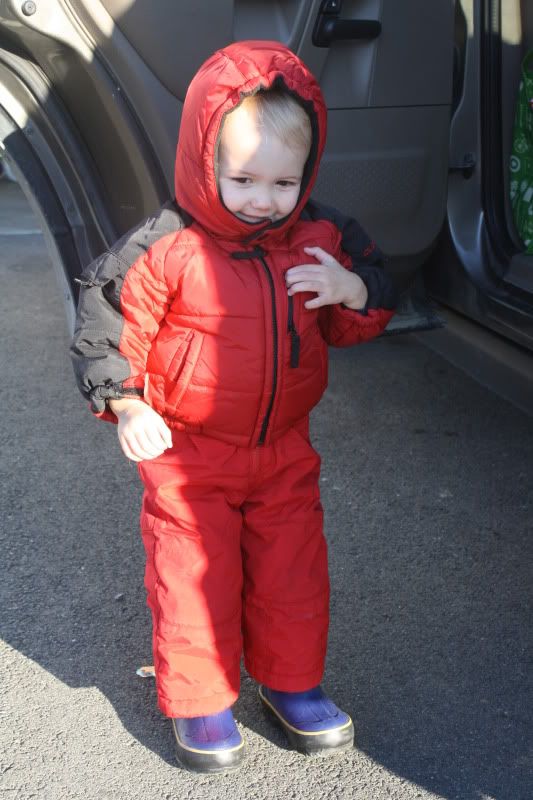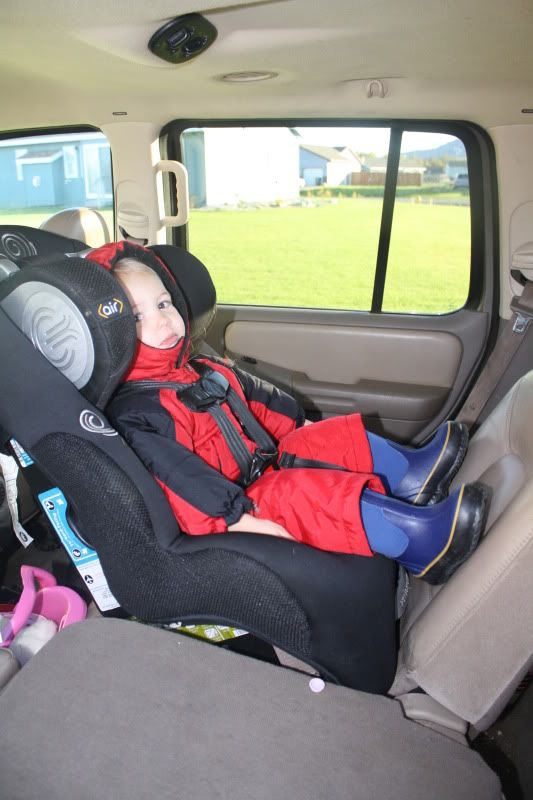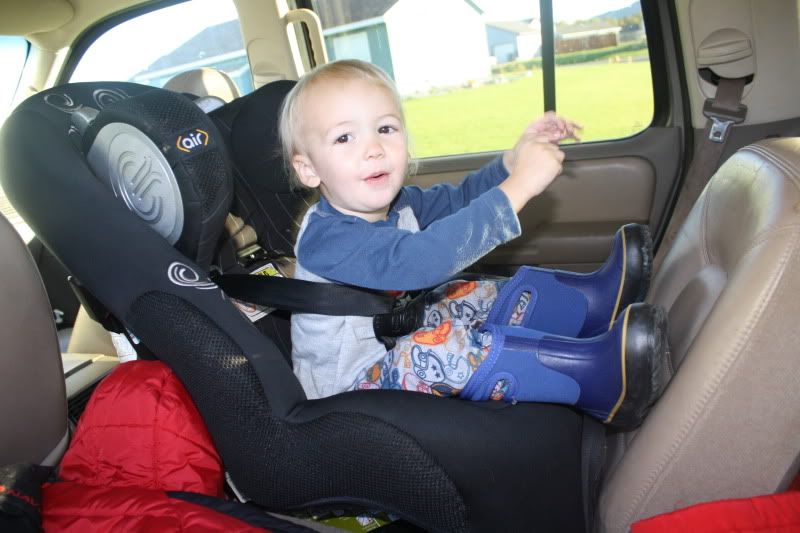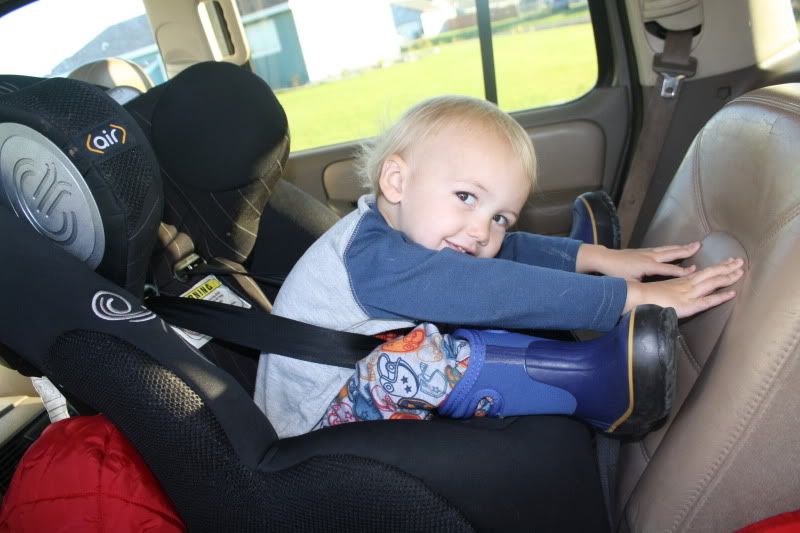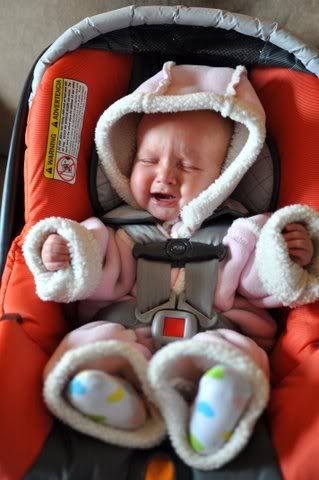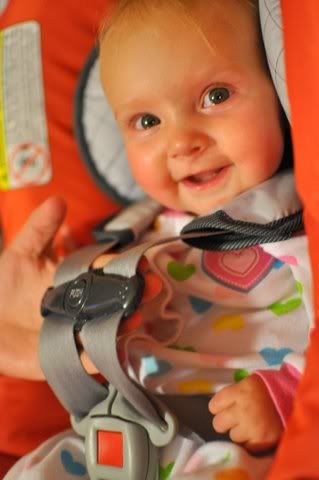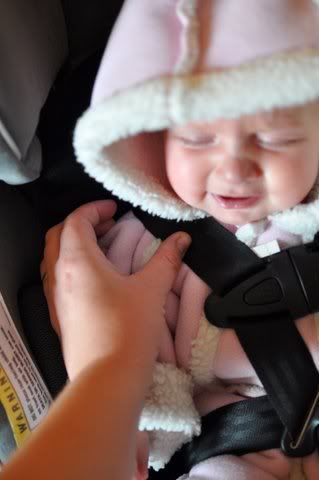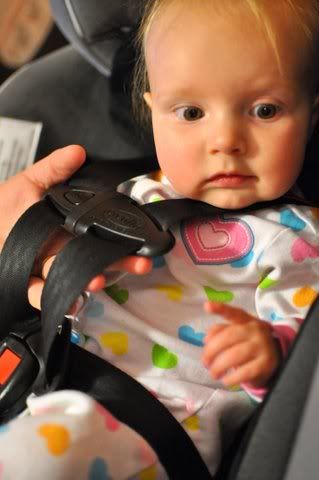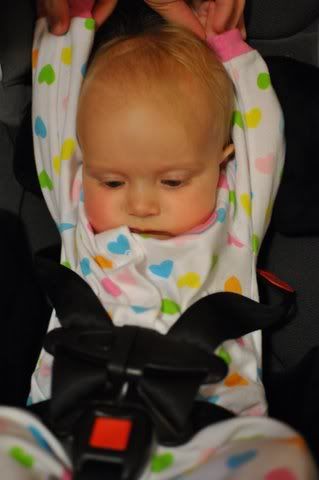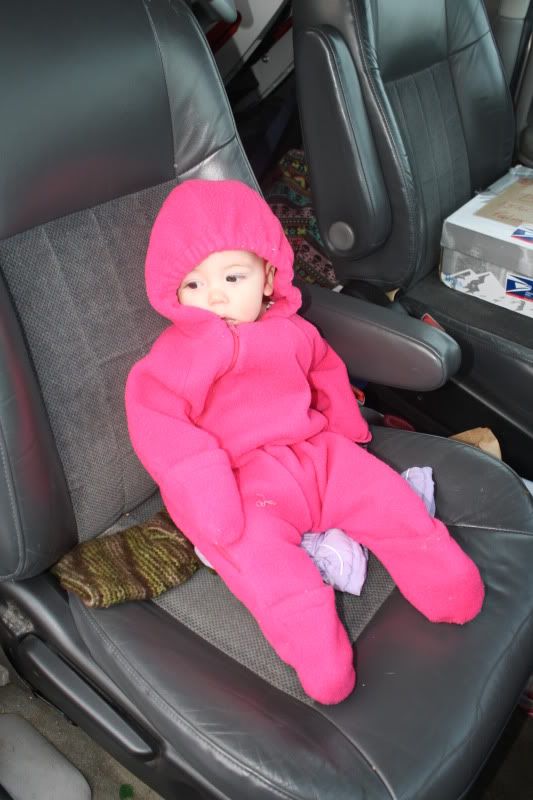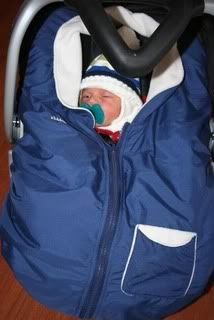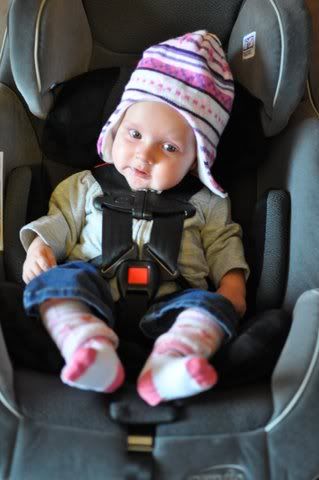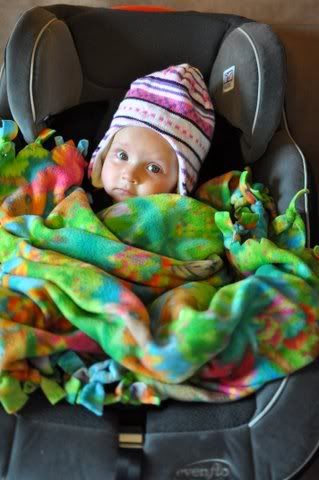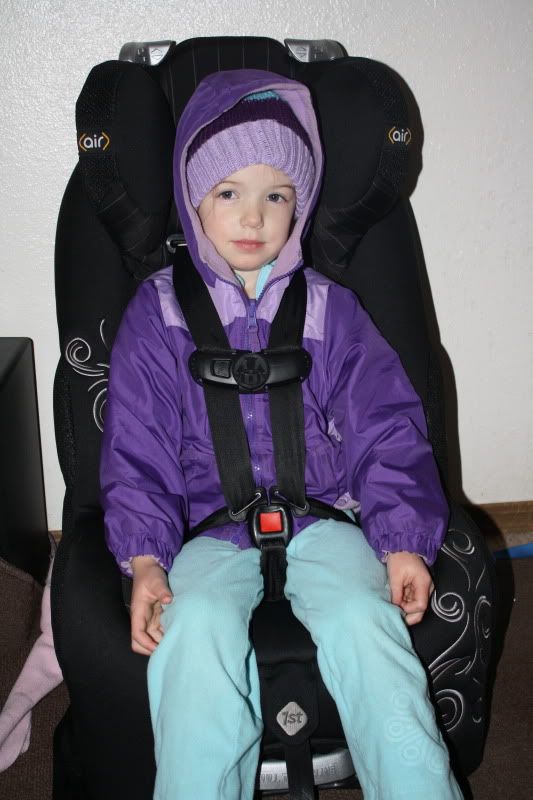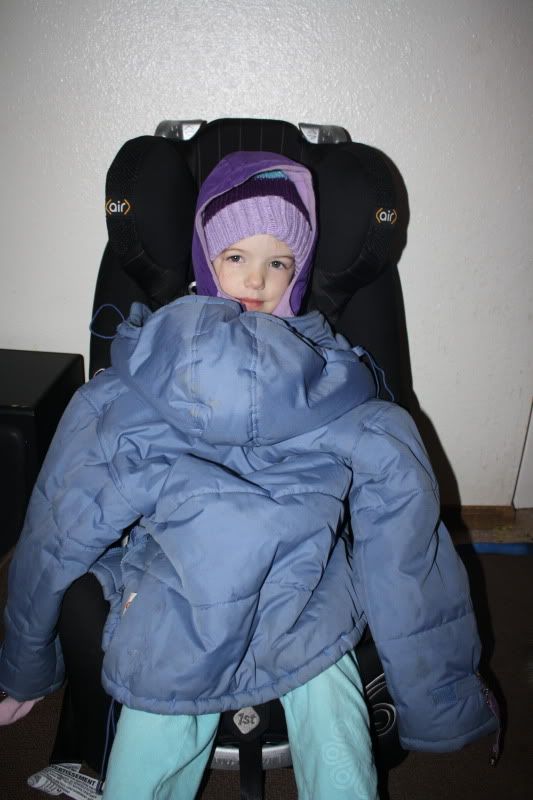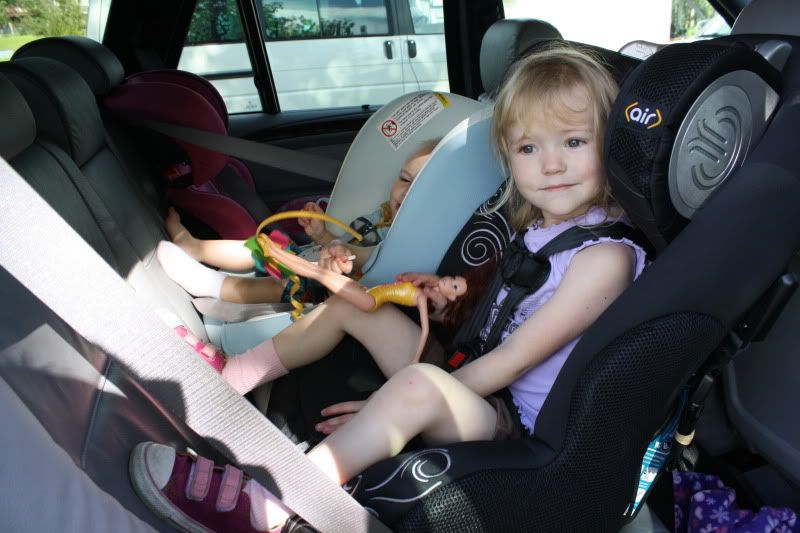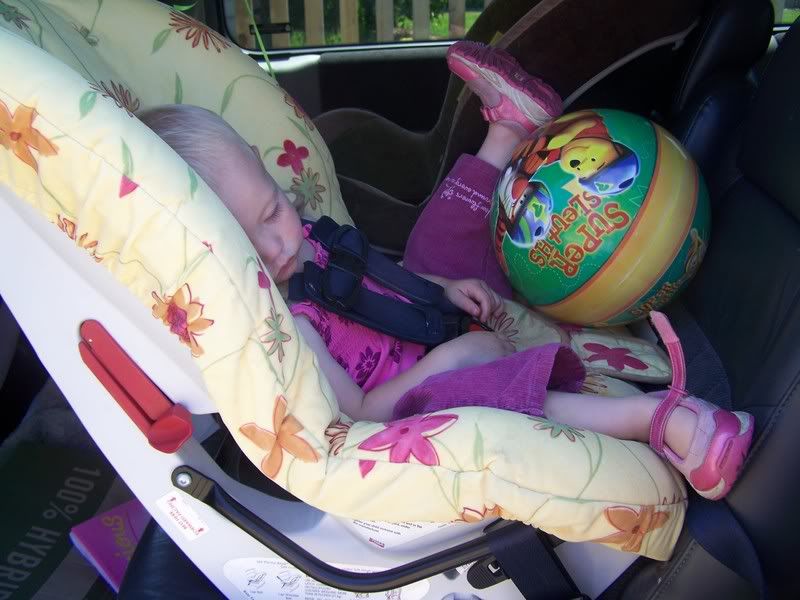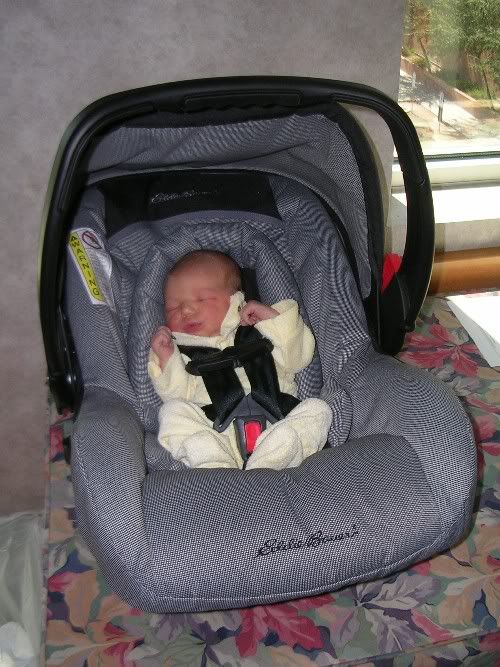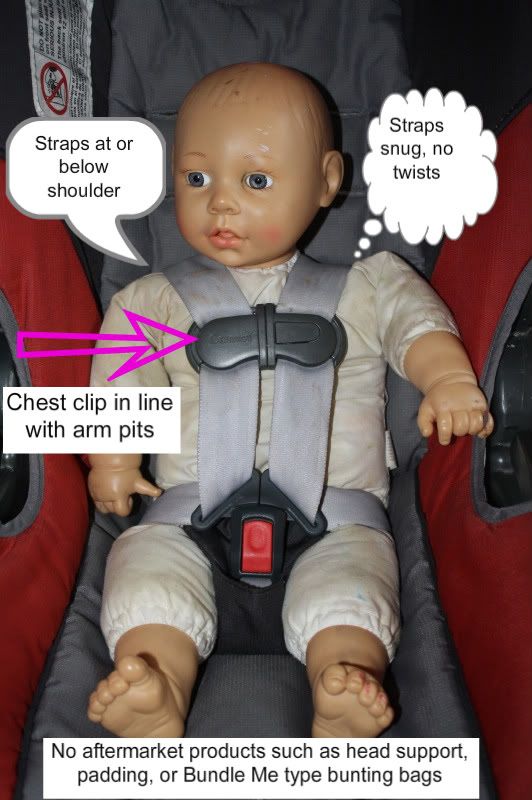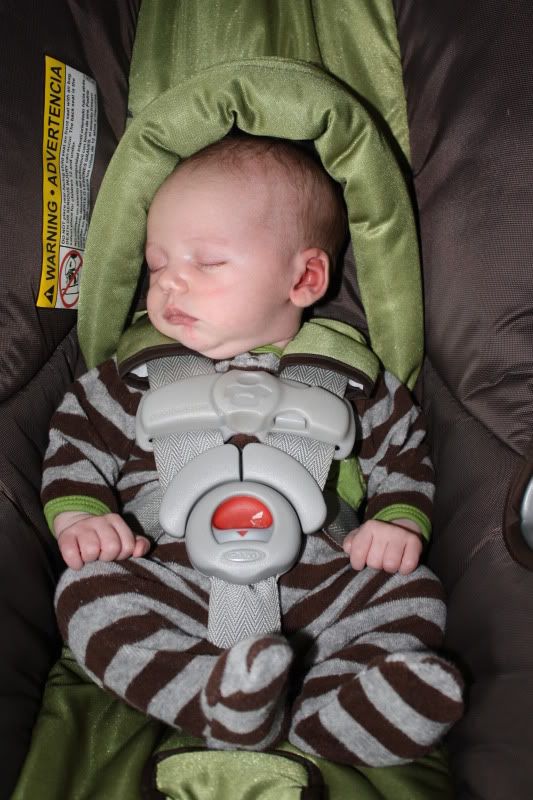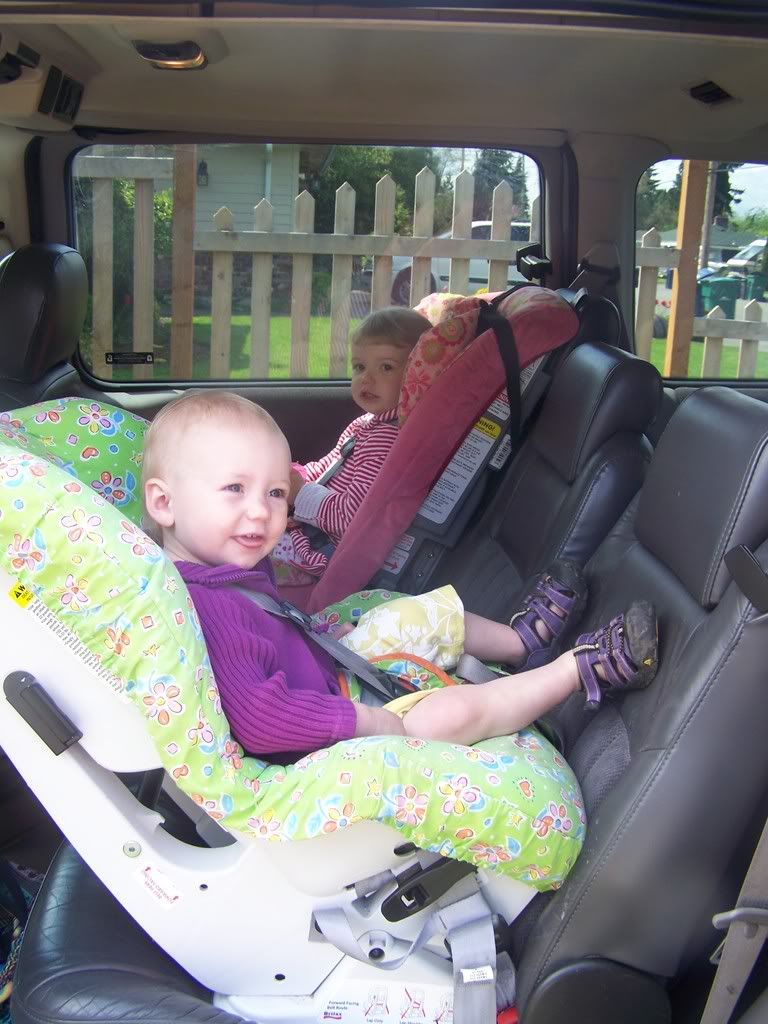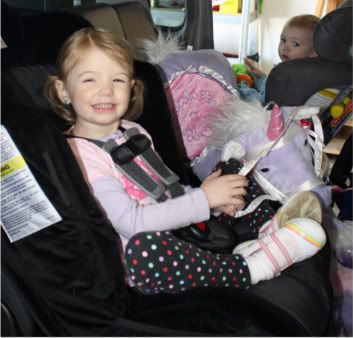From the Child Passenger Safety Technical encyclopedia:
"Thick, soft, and compressible material should not be placed behind or under the child, nor in between the child and the shoulder or lap straps. The primary concerns are that the padding may negatively affect the way the CR works in a crash and that blankets or inserts may interfere with proper harness routing. Soft foam padding or fluffy blankets will compress in a crash and leave the harness slack on the child, allowing excessive movement or even ejection. Bulky jackets and snowsuits can have the same effect, while "baby bags" without legs and blankets wrapped around the baby before harnessing do not allow for proper routing of the crotch strap."
From SeatBeltSafe:
"Clothing worn by children can present compression and harness routing problems. Bulky jackets and snowsuits can compress in a crash and leave the harness slack on a child, allowing excessive movement or even ejection. It is best to have children travel without coats, to put coats on backwards, or to add a blanket over the child after the harness has been buckled. Jackets that are worn the regular way should be no heavier than lightweight fleece fabric or be unfastened to allow contact between the child and the harness or vehicle belt. An option for an infant in an infant seat is a shower cap-style seat cover. This style of cover fits over the top of the infant seat, has an elastic band around the edge, and has no fabric behind or under the child."
From Transport Canada:
"Some aftermarket products can cause safety issues ranging from inducing slack in the shoulder harness system to adding compressible material behind the child, which during a crash will allow for slackness in the harness system. The resulting slack in the harness may cause the child to be either partially or fully ejected from the restraint system, in the event of a crash or sudden stop... Bulky snowsuits can affect the harness with respect to additional compressibility. In addition, many snowsuits are made of very slippery material. This can affect the harness system should the chest clip of the restraint not be used properly. When using bulky winter clothing ensure that the harness system is tight, compressing the material to ensure a snug fit. Check with the car seat manufacturer for alternative methods of clothing during the winter."
Check your car seat's manual: it will have a section in the front warning against bulky clothing and aftermarket products (such as buntings, "Bundle Me" type bundle bags, Kidpotamus Snuzzlers, etc). An example of such warnings:
From Baby Trend:
"Do Not dress your child in bulky clothing or other garments that will hinder the harness from being snug around your baby and properly latched between your child's legs."
From Chicco:
"NEVER use clothing or blankets that interfere with fastening or tightening the harness. An unsecured child could be ejected in a sudden stop or crash! To keep child warm, place a blanket over child and restraint AFTER you have properly secured child in harness. DO NOT use any accessories, pads or products supplied by other manufacturers with this Child Restraint. Items not tested with this restraint could injure your child."
From Evenflo:
"In cold weather, DO NOT dress the child in bulky clothing like snowsuits if the child is riding in a child restraint. Bulky coats/ snowsuits make it difficult to properly tighten the harness to the child, which may allow the child to be ejected from the restraint during a crash."
The following pictures illustrate why it's not safe to wear thick coats, jackets, or snow suits in the car seat. They demonstrate how bulky clothing will compress in a crash--no matter how tight the straps are when you put the child in their seat. In all these pictures, the straps were tight and the coats were compressed to the extent of my (human) ability. In a crash, however, there is an extreme amount of energy being transferred to the car seat, and the coat or snowsuit is able to be compressed much more than we are able to do with our bare hands. In effect, the coat or snowsuit will compress down to nothing, leaving slack in the harness. This is what is demonstrated in these pictures--the amount of slack that will be introduced to the harness system in the event of a crash.
A common question is "but are there cases of children actually being ejected from their car seat?" The answer to that is yes, there certainly are. In 2009, 24,474 people died in car crashes. Of those, 6844 were under the age of 16, and of these, 909 were fully or partially ejected.
With no further ado, here are the pictures!
Here is Scarlett, my four year old, wearing her normal outdoor gear: snow bibs and her warm coat.
Next I put Scarlett in just her coat, without the snow pants.
The straps are tightened so they pass the pinch test:
With the coat taken off, there is a dangerous amount of slack:
And she is not going to be safely restrained in a crash.
And finally here is my two year old little guy, all ready to go in his bibs and coat.
The straps are tightened securely and pass the pinch test:
With the coat and snow pants removed:
There is a large amount of slack in his harness that could easily allow him to be ejected in a crash.
All buckled in, ready to go. This snowsuit looks pretty harmless, and is a good deal less puffy than many you see out there.
With the snowsuit removed:
Here's the little sweetie in her other ride (the Evenflo Symphony convertible seat):
Harness is nice and snug:
With the snowsuit removed:
Yikes!
So how do we keep them warm and safe?
1. Fleece is your friend! For babies, a good-quality fleece one-piece outfit with a long-sleeved onesie or cotton pajamas is a good start. Fleece is very dense and very warm, and it doesn't compress in a crash. I'm a big fan of fleece suits for infants and toddlers.
Carter's has many fleece jammies, which are great for teeny babies. They also have fleece suits like this, which I loved for my kids:
I have also had good luck with Old Navy, as they frequently have fleece at good prices.
Several brands, such as Columbia, The North Face, and REI make quality one-piece fleece buntings. Many even have the option of folding the cuff over to cover their hands and feet.
Here's my son modeling his (pink!) fleece suit:
2. Smart layers. This is especially important for older kiddos, who don't have the option of snugly one-piece suits. My kids wear cotton tights under fleece pants, and a long-sleeved shirt under a fleece jacket. If you have wind, a nice thin windbreaker can safely go over fleece:
3. Shower-cap style covers. If you are using an infant seat, choose a shower-cap style cover for it, as these keep the wind and cold off your little one without introducing slack into the harness. You can also tuck blankets over the baby, and the shower cap cover will keep them in place--but once the car warms up, don't forget to unzip the cover and loosen the blankets so baby doesn't get overheated!
Here is another teeny guy wearing warm clothing, with the shower cap style cover unzipped.
And zipped up, ready to go!
4. Blankets over the harness. This is a great option since the child can kick the blanket off when they are warm enough, which prevents them from getting overheated. They work well in the infant seat...
...and in the convertible seat
5. The "backwards coat trick." This involves buckling up the kiddo, and, you guessed it--putting their coat on backwards, over their harness. Here is our model buckled in wearing her fleece and windbreaker:
After she's buckled, I tuck her warm winter coat around her, and she kicks it off after the car gets warm.
6. The Car Seat Poncho! This product was invented by a fellow Child Passenger Safety Technician as an alternative to thick, puffy outerwear. 